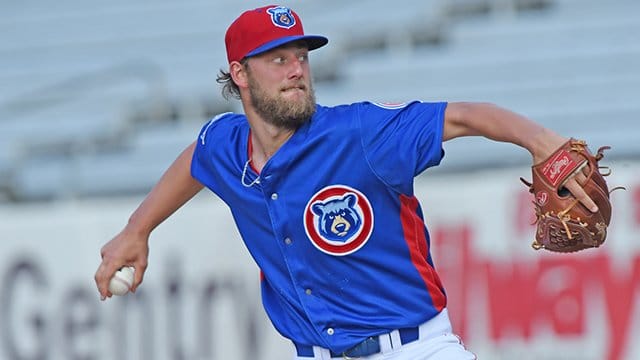
Prospect Profile Update: Trevor Clifton Is Off to His Best Start for Tennessee Smokies
Last Tuesday was an interesting day in the minor leagues. There were two games during the day and only one at night. Luckily, I got to sit and watch Trevor Clifton pitch without any interruptions. It was a fun game to watch as he went six innings and gave up only four hits, while striking out seven and walking one. Clifton threw 94 pitches, 60 of them for strikes, and Tennessee easily won 8-0.
 For the past three summers, I have been following Clifton’s career closely. First, it was by radio when he was in Boise, where he began to flash the potential of the kind of pitcher he would become. He was able to work out of jams and use his curveball as an out pitch. It was also there that he tended to get in trouble via the walk, which necessitated a better pickoff move.
For the past three summers, I have been following Clifton’s career closely. First, it was by radio when he was in Boise, where he began to flash the potential of the kind of pitcher he would become. He was able to work out of jams and use his curveball as an out pitch. It was also there that he tended to get in trouble via the walk, which necessitated a better pickoff move.
The righty continued to hone his skill at South Bend in 2015, mainly working to be more efficient. In July of that season, he started to put things together and had a nice run to close out the campaign. In 2016, he picked up where he left off and was the Cubs Minor League Pitcher of the Year.
This year, Clifton is off to his best start as a Cubs prospect. He has a 2.37 ERA for the season and has only allowed three earned run in three May starts. Even when he has not had his best stuff, the newly-minted 22-year-old (May 11) has shown that he knows how to get through opposing lineups and keep his team in the game.
Here’s how he does it:
1. Arm-side run
It all began with a few strings. In 2015, South Bend pitching coach Brian Lawrence began setting up strings for pitchers to throw above or under. Those strings represented the strike zone. Clifton often commented on how much the exercise of throwing with strings was influential in helping him develop fastball command. In addition to helping with his vertical command, the string work helped him put his fastball on either side of the plate.
He can start it in on a left-hander only to flit back across the inside corner, or he can start to the outside corner to have a lefty chase off the plate. His fastball tends to start its movement about 10-15 feet from the plate, making it very hard to hit.
2. The pickoff move
I don’t think Clifton gets enough credit for his ability to pick runners off first base. Last year, his walk rate plummeted and his ability to keep runners close at first allows him to focus on the hitter. In the game I attended, Clifton walked a batter and then threw over a couple of times before whirling in one lightning-quick motion to catch the runner by a good two feet.
 3. Patience
3. Patience
Mental skills truly are an underrated part of Clifton’s game. Breathing technique to pacing, just not being in a hurry, really allows him to relax and do what he needs to do. It’s not as if he’s a human rain delay out there, since AA is, after all, on a pitch clock. He looks to be just out there throwing the ball around as if there wasn’t even a game going on.
4. Throwing inside
One of the greatest influences Myrtle Beach manager Buddy Bailey had on Clifton was to be intentional about throwing inside to keep hitters from leaning out over the plate. All last year, he owned the inside of the plate better against lefties and held them to a .205 average. This year, he’s holding lefties to a .203 average with a 0.83 WHIP.
It should be interesting to see just exactly where he is at a month from now. With some starting pitching issues in AAA Iowa, as well as in Chicago, there could be a couple spots opening up in Des Moines. After six weeks, Clifton has put himself at the top of the list, along with teammate Zach Hedges, to head north to AAA this summer.
